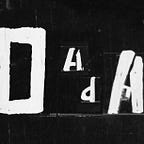Be your own Medici
By Yehudit Mam
What is art for? First and foremost, it’s for your own personal delight. If it makes you happy, it’s done its job. You stand in front of it at a museum or admire it in a poster, and it stirs you. Investing in art can be fun and good, ruthless business. But most art collectors do it because they love art.
Part of this delight comes from the thrill of admiring something that moves you. Another big part comes from being able to own something. After all, one of the first words toddlers utter when they become individualized is the word “mine”. Owning is a primal instinct. And possession is even more fun if it includes a challenge.
Collecting is about desire. And desire is about possession.
I don’t really care about material things. But when I walk into MoMa and see my favorite Jackson Pollock , I want to take it with me. I want to have it on my wall.
I may not be able to afford a Jackson Pollock, but now, with rare digital art, I can afford work by new artists I want to champion. I can be like Gertrude Stein in Paris, but at my desk in front of my computer.
Part of the joy of owning art comes from supporting someone whose work you admire, whether it is for aesthetic, altruistic, or narcissistic reasons. Alas, the world of fine art today is far removed from the reality of most people. Art fairs are circuses for the wealthy. Members of the 1% pay egregious sums for paintings that others may never get to see. Museums charge steep admittance fees. Pretentious art scares people.
But rare digital art, an emerging field, is like a breath of fresh air.
Rare digital art is affordable, ownable, and sellable. In this, it replicates traditional art but soon it will do it at a massive scale.
It brings art closer to people, and makes it easily attainable. Since it is pegged to cryptocurrency, it also happens to be an investment, with similar risks and rewards to a regular art investment. Why settle for a well-worn reproduction, when you can own the fresh, original work of a living artist without having to mortgage your house? Regular people can become collectors. They can become patrons of the arts.
This can have powerful ramifications:
Artists, those mythical beings that no one understands, are demystified. They deserve appreciation and validation. Now they can benefit from engaging directly with their fans and champions. This is hugely motivating for both. The gap between artists and their fans is narrowed. Artists get more exposure and more opportunities to live from their work.
Regular people have immediate access to affordable art. They can derive endless joy (and even some cash) from collecting and championing the artists they admire. Because of smart contracts, everybody wins. The collector profits and the artist always gets a cut of those secondary sales (this is how it works on DADA). By enjoying it first hand, more people understand that artists and art are essential for a healthy society. Art continues evolving and it becomes an active part of the lives of millions of people; owning art becomes as natural as breathing. Humanity improves.
Rare digital art is a powerful democratizing force. It brings art back to the people — as creators and collectors. It just happened at the Rare Digital Art Festival. At a live auction, a unique Rare Pepe fetched $40,000. A Cryptokitty auctioned for charity fetched a similar price. But the people who bid were not the spawn of dynasties: they are freshly minted crypto millionaires. It could happen to you.
Yes, some people may be paying enormous sums for what are basically pixels, but the spirit of these projects is one of inclusiveness and playfulness. Some of them, like CryptoPunks, Cryptokitties, or DADA, are themselves complex, living artworks. They engage whole communities. They are participatory, and despite buying and selling frenzies, they are inherently democratic. They do what the analog art world cannot do — they give regular people agency. I bought a CryptoKitty for $1.40. People can profit from Cryptopunks they claimed for free. I can buy an original artwork by a living artist on DADA for $20. I can amass a collection of my favorite artists for a fraction of what it would cost to own a painting by an obscure artist. I can be my own Medici.
